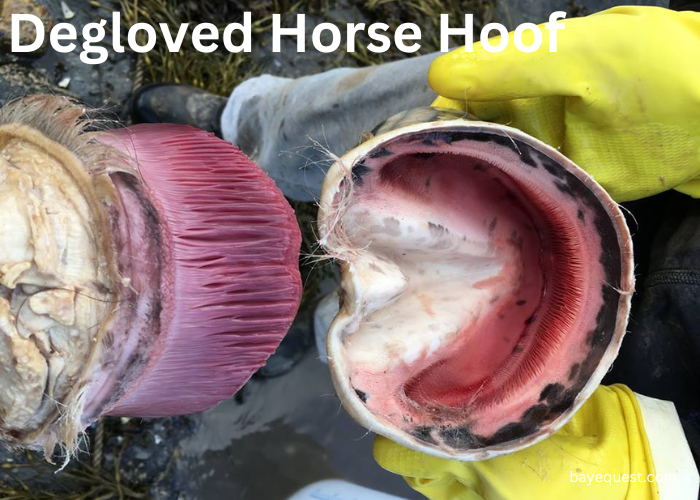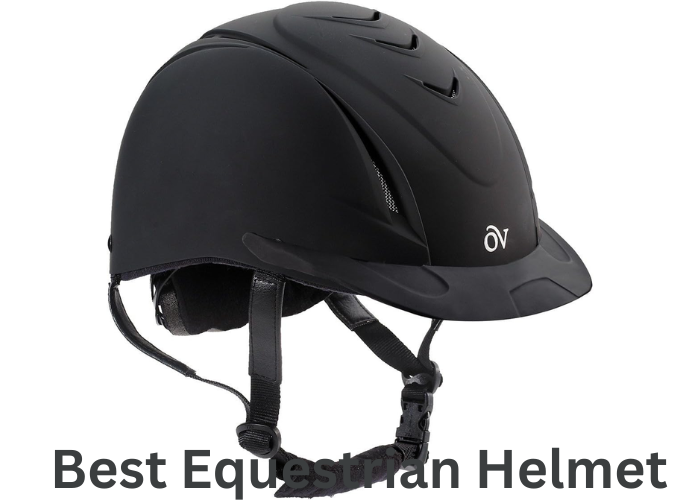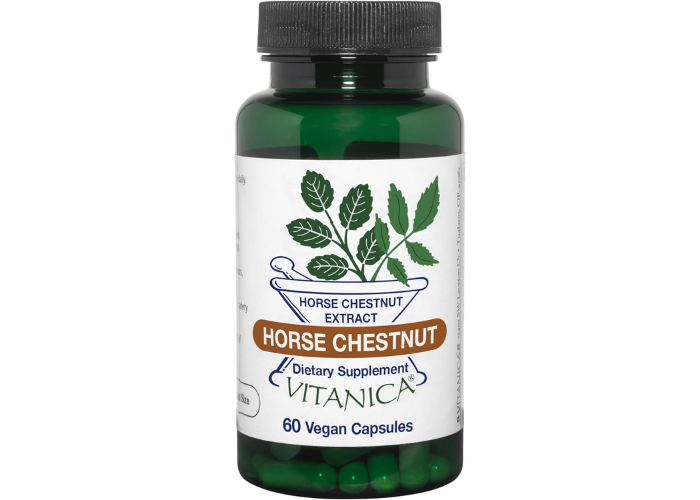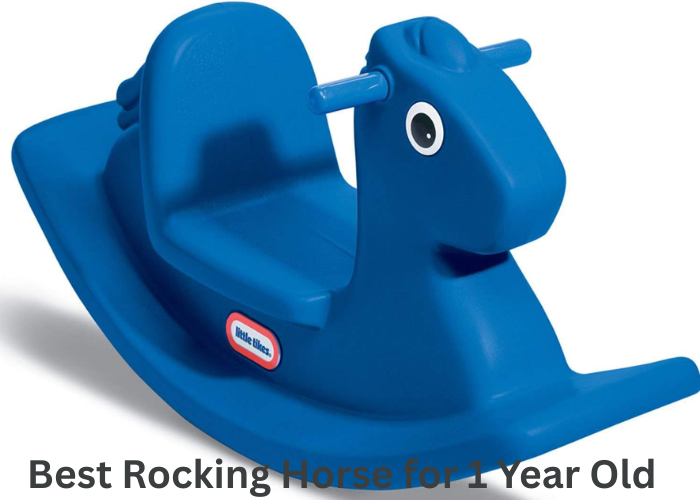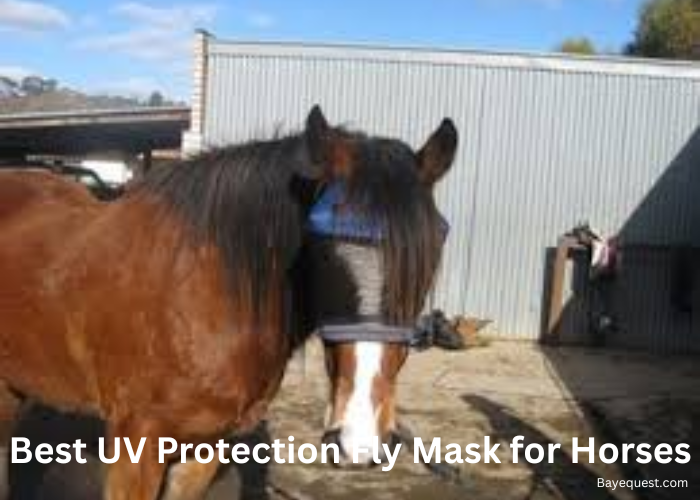A degloved horse hoof is as horrifying as it sounds. One moment, your horse is fine. The next, its hoof is barely hanging on.
It’s a painful and serious injury. Blood, shock, and sheer panic follow. But don’t lose hope. Horses can survive this with the right care.
Understanding what causes it and what to do next is crucial. Quick action can mean the difference between recovery and tragedy.
Let’s break it down—what happens, why it happens, and how you can help your horse heal.
What is a Degloved Horse Hoof?
A degloved horse hoof is when the outer part of the hoof, called the hoof capsule, gets ripped away from the rest of the foot. It’s like peeling a glove off your hand.
The hard outer shell, which protects the soft tissues inside, gets torn off, exposing sensitive nerves, blood vessels, and bone. This usually happens from a nasty accident—like getting caught in a fence or a bad fall.
It’s serious because the hoof is vital for a horse’s movement and balance. When the hoof gets degloved, the horse is in pain, vulnerable to infection, and needs immediate help.
How Does Degloving Happen?
Degloving happens when a horse’s hoof gets caught or trapped in something and forcefully pulled away. It could be a fence, a gate, or even tangled wire.
Imagine the horse pulling back in panic or trying to free itself. That’s when the trouble begins. The outer layer of the hoof, the tough part we see, can tear away from the inner structures.
Sometimes it’s a slip or a fall on rough ground. Other times, it’s due to improper hoof care or loose shoes that snag on something.
Whatever the cause, the hoof gets peeled back, and it’s a serious, painful injury.
Signs and Symptoms of a Degloved Hoof
If a horse’s hoof is degloved, the signs are often stark and shocking.
You’ll see exposed flesh, raw and bleeding, where the tough hoof shell should be. The horse may refuse to walk or stand, shifting its weight to avoid using that leg.
There’s likely swelling around the hoof, and it might feel hot to the touch. Watch for limping, trembling, or even a horse in a state of shock.
They may also show signs of distress—eyes wide, nostrils flaring, heavy breathing. These are the cries for help, and they need quick action.
What Causes a Degloved Horse Hoof?
The following factors cause degloved horse hoof:
1. Laminitis
Laminitis is inflammation of the laminae, the sensitive tissues that connect the hoof to the horse’s foot. When these tissues weaken or become inflamed, the hoof can start to separate from the underlying structures.
In severe cases, the hoof capsule can detach entirely, leading to degloving. It’s like the foundation crumbling away, leaving nothing to hold the hoof in place.
2. Physical injury
A direct injury—like getting caught in a fence, stepping on a sharp object, or a bad fall—can tear the hoof away from the foot.
When the horse pulls or twists in a panic, the outer hoof can get ripped off, exposing soft tissue and bone.
3. Improper hoof care
Neglecting regular hoof maintenance weakens the hoof over time. Cracks, splits, or overgrown hooves can make the outer layer more likely to tear off.
If not trimmed or cleaned properly, the hoof is more vulnerable to injury and degloving.
4. Poor shoeing techniques
Shoes that don’t fit right or are nailed incorrectly can cause constant pressure or pain.
A poorly fitted shoe can also snag on something, or the nails may not hold properly, leading to the hoof being ripped away during movement.
5. Accidental trampling
When a horse is accidentally stepped on by another horse or lands awkwardly, the pressure can crush or tear the hoof capsule. If there’s enough force, it can peel away from the underlying structures.
6. White line infections
White line infections affects the inner connection between the hoof wall and the sole. If the infection progresses, it weakens the hoof wall from the inside.
This can cause the hoof to separate and, in extreme cases, lead to degloving. The hoof loses its strength and starts to come apart, especially under stress or strain.
How to Diagnose a Degloved Horse Hoof
Diagnosing a degloved horse hoof is usually straightforward because of the obvious signs, but a thorough approach is still crucial. Here’s how it’s done:
Visual examination
The vet starts by looking at the hoof. If the outer hoof capsule is missing or partially torn away, exposing sensitive tissues, it’s a clear sign.
They’ll check for bleeding, swelling, and signs of infection or exposed bone. The condition of the hoof wall, sole, and frog will be carefully assessed.
Assessing pain response
The vet will observe the horse’s reaction to touch around the injured area. A degloved hoof is extremely painful, so the horse may flinch, pull back, or refuse to put weight on the leg.
The vet looks for these pain responses to gauge the severity of the injury.
Checking vital signs
A horse with a degloved hoof can go into shock. The vet checks vital signs like heart rate, respiration, and temperature to see how the horse is coping with the injury.
Elevated heart rate or rapid breathing may indicate pain, stress, or shock.
Palpation
The vet gently feels around the injured area to assess damage to deeper tissues.
This helps to identify any swelling, heat, or other signs of underlying trauma that aren’t immediately visible.
X-Rays and imaging
X-rays are often used to see if there’s damage to the bones inside the hoof.
With a degloved hoof, the outer hoof is gone, but there could also be fractures or damage to the coffin bone or other structures inside. Imaging helps determine the full extent of the injury.
Checking for infections
The vet looks for signs of infection, such as discharge, foul smell, or unusual heat in the hoof. Since the inner tissues are exposed, infections are a big risk.
The vet may take samples for lab tests to identify any bacteria present.
Degloved Horse Hoof Treatment
Treating a degloved horse hoof is a delicate and urgent process. It needs a vet’s expertise and a lot of care. Here’s how treatment usually goes:
1. Stabilize the horse
First things first, keep the horse calm and still. The vet might use sedation to help with that. Pain relief is a priority.
They’ll give medications to manage pain and prevent shock. The goal is to keep the horse comfortable while preparing for the next steps.
2. Clean the wound
The exposed area needs to be cleaned right away. The vet will use sterile saline and antiseptics to wash out dirt, debris, and any bacteria.
This step is crucial to prevent infection because the inner tissues are vulnerable without the protective hoof wall.
3. Bandage and protect
After cleaning, the wound is covered with sterile bandages. Layers of padding are used to protect the exposed tissues and keep the area clean.
A hard outer layer, like a hoof boot or cast, might be added to support the hoof and protect it from further injury.
4. Antibiotics and medications
Antibiotics are often necessary to prevent or treat infections. Anti-inflammatory drugs help reduce pain and swelling.
These medications can be given orally, by injection, or directly to the wound, depending on the case.
5. Regular wound care
The bandage needs to be changed regularly to keep the wound clean and check for any signs of infection.
The vet or an experienced caretaker will carefully clean the area and reapply fresh bandages. This process could go on for weeks or even months, depending on how severe the injury is.
6. Hoof reconstruction and regrowth
In some cases, reconstructive surgery is needed to repair the damaged hoof or provide support while it regrows.
The vet may use synthetic materials or special shoes to help the hoof grow back correctly. Growth takes time—sometimes up to a year or more.
7. Ongoing care and rehabilitation
Even after the initial treatment, the horse needs a lot of care. It might need limited movement, a soft surface to stand on, and regular vet check-ups.
Nutrition is also key—good diet and supplements help the hoof grow back strong.
8. Monitoring for complications
Watch for signs of infection, hoof cracks, or laminitis, which can happen as the horse recovers. The vet will continue to monitor the hoof’s regrowth and address any problems early.
How to Prevent a Degloved Horse Hoof
Preventing a degloved horse hoof comes down to good care, safe environments, and regular checks. Here’s how you can keep those hooves safe:
Maintain safe fencing and enclosures
Make sure fences, gates, and stalls are secure and free from hazards. No sharp edges, loose wires, or broken boards.
Horses can panic and get their hooves caught in gaps or broken areas. Regular checks and repairs can prevent accidents that lead to degloving.
Regular hoof care
Keep up with hoof trims and cleanings. Overgrown, cracked, or poorly maintained hooves are more likely to get caught and torn.
A good farrier will keep the hooves in shape, trim them properly, and spot any early signs of trouble, like cracks or infections.
Proper shoeing techniques
Make sure shoes fit well and are securely attached. Poor shoeing or loose shoes can catch on things, causing a hoof to rip off.
Work with a skilled farrier to ensure shoes are the right size, shape, and fit for each horse.
Safe pasture management
Check pastures and turnout areas for hazards. Remove rocks, debris, sharp objects, or anything that could cause injury.
Clear pathways and keep footing level and safe. Uneven or rocky terrain can increase the risk of slips, falls, and hoof injuries.
Monitor horse interactions
Horses can accidentally step on each other or get into fights that lead to hoof injuries. Be mindful of how they interact, especially in confined spaces.
Separate aggressive horses or those prone to kicking to avoid accidents.
Control White Line Disease and infections
Keep an eye out for white line disease and other hoof infections. These weaken the hoof from the inside and can lead to separation.
Regular cleaning, good hygiene, and prompt treatment of any infections keep the hooves healthy and strong.
Supplements
Supplements help prevent a degloved hoof by strengthening hoof health. Biotin, methionine, and lysine support hoof growth and repair.
Zinc and copper are crucial for keratin production and tissue bonding. Omega-3 fatty acids improve circulation, reduce inflammation, and support healthy growth.
Calcium and phosphorus balance ensures strong hoof structure. MSM (Methylsulfonylmethane) aids collagen production and hoof flexibility.
Hoof-specific blends combine these nutrients to boost overall hoof strength. With proper nutrition and care, these supplements help make hooves stronger and less prone to injuries.
Blistering vs Degloving
Blistering and degloving sound similar, but they’re worlds apart.
Blistering is a warning sign. It occurs when the skin is rubbed or irritated, and bubbles of fluid appear under the skin.
It’s painful, but the damage is mostly on the surface. With some care and time, blisters heal, and the skin goes back to normal.
Degloving, though, is much more severe. It’s when the skin or hoof tears away completely, exposing muscles, tendons, or even bones.
It’s not just surface-level—it’s deep, raw, and incredibly painful. Blistering can be managed with bandages and rest.
But degloving? That’s an emergency. It needs immediate vet care, possible surgery, and long-term recovery.
Both are serious, but degloving is a game changer. It’s not just about time and patience; it’s about life and limb.
When to Consider Euthanasia
Euthanasia is a tough decision, but sometimes it’s the kindest choice for a horse with a degloved hoof.
You consider it when the damage is too severe—when the hoof is completely torn away, exposing bones, and there’s little chance of recovery.
If the horse is in constant, unbearable pain that painkillers can’t control, or if infections keep spreading, it might be time.
When the cost of treatment is high, and the chances of a full, pain-free recovery are low, you think about quality of life.
Euthanasia isn’t easy, but sometimes it’s the only way to end the suffering.
Horse Degloved Hoof: Conclusion
A degloved hoof is a nightmare and a battle. It tests your nerves, your heart, and your horse’s willpower.
But with quick action, good care, and a bit of luck, a horse can heal and stand strong again.
Keep fences safe, hooves trimmed, and eyes sharp. Know the signs, and be ready to act fast. Sometimes, it’s about making the tough call.
Other times, it’s about fighting for recovery. Either way, understanding the risks and being prepared makes all the difference.




